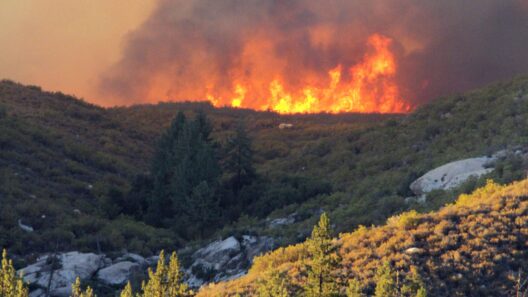When contemplating celestial bodies within our solar system, one might naturally be drawn to the Moon—our planet’s faithful satellite. As the only extraterrestrial body where humans have physically set foot, the Moon evokes curiosity and wonder. Yet, beyond the romanticized imagery and tales of lunar landings lies an environment starkly different from our own. The climate of the Moon presents extreme challenges characterized by the absence of a substantial atmosphere, resulting in temperature fluctuations that are among the most severe observed in any celestial realm.
To understand the Moon’s climate, one must first comprehend its notable lack of atmosphere. Unlike Earth, which is enveloped in a protective layer of gases that maintain moderate temperatures and shield against solar radiation, the Moon exhibits a near-vacuum state. This absence of atmospheric pressure profoundly impacts temperature regulation, allowing the surface to reach staggering extremes. When the Sun shines directly on the lunar surface, daytime temperatures can soar to approximately 127 degrees Celsius (260 degrees Fahrenheit). Conversely, during the prolonged lunar night, temperatures can plummet to a bone-chilling -173 degrees Celsius (-280 degrees Fahrenheit). Such vast temperature discrepancies underscore the Moon’s inhospitable nature.
The crux of these temperature extremes lies in the Moon’s rotational dynamics. A single lunar day, defined as the interval from one sunrise to the next, lasts about 29.5 Earth days. Consequently, the Moon experiences prolonged periods of sunlight interspersed by equally extended nights. This peculiar rotational pattern incentivizes dramatic temperature swings, facilitating scorching heat during the day while allowing cold to prevail at night. The lack of an atmospheric blanket means that heat absorbed by the surface during the day dissipates rapidly once the Sun sets.
In addition to daily temperature variations, the Moon’s surface experiences extraordinary seasonal fluctuations. The tilt of the Moon’s axis is minimal—only about 1.5 degrees—resulting in negligible seasonal changes compared to Earth. However, over the course of an entire lunar year, which equates to approximately 13 Earth months, the temperature can fluctuate significantly. For instance, polar regions on the Moon exhibit comparatively stable temperatures; however, areas near the equator can alternate between being scorchingly hot and freezing cold during different periods of exposure to sunlight.
The uniqueness of the Moon’s climate fosters an intriguing dichotomy—while the highs are blistering, the lows harbor a chilling quality that crafts a landscape deemed inhospitable. This environment poses numerous challenges for potential future lunar exploration and habitation. For instance, protective habitats would need to harness innovative thermal insulation technology to withstand such temperature extremes. Without proper measures, any materials or equipment left exposed would likely degrade rapidly due to the solar radiation and thermal shock.
Moreover, the Moon’s surface is characterized by the presence of regolith—a fine layer of dust and small rocks created by the relentless bombardment of micrometeorites and solar radiation. This regolith is not only a witness to the Moon’s dynamic history but also plays a pivotal role in the limitations it poses for human activity. The abrasive nature of lunar dust can hamper machinery and affect the health of astronauts. Scientifically, understanding the composition of this regolith may unveil valuable resources, such as water ice potentially hidden in shadowy craters, which could be crucial for sustaining human presence on the Moon.
The harsh lunar climate also elicits a sense of wonder that transcends science. It evokes philosophical questions regarding humanity’s relationship with the cosmos. As we embark on missions to explore celestial bodies, the allure of the Moon speaks to our innate desire to conquer the unknown and stretches our perception of habitability. The Moon, in its stark and unforgiving manner, exemplifies a haunting beauty that provokes curiosity and admiration while simultaneously serving as a reminder of the fragileness of Earth’s environment.
The Moon’s lack of atmosphere and resultant extreme temperatures create an environment that is both fascinating and formidable. The dichotomy of blistering heat and frigid cold encapsulates the challenges faced by explorers and raises significant questions for future endeavors. As humanity contemplates interplanetary exploration, the Moon remains a critical subject not only for scientific inquiry but also for philosophical contemplation. It serves as a bold canvas illustrating the stark realities of outer space, juxtaposing the marvels of discovery against the unfathomable challenges that lie ahead.
In essence, the climate on the Moon extends beyond mere scientific interest; it emerges as a profound narrative reflecting the human condition in the greater tapestry of the universe. And while we continuously strive to understand this enigmatic satellite, it is crucial to draw connections back to Earth, recognizing that even in our thirst for exploration, we must remain stewards of our own planet, fostering a balance between ambition and sustainability.







